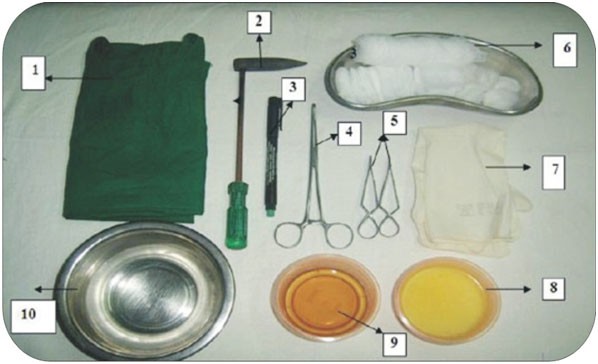
*Dr Imlikumba
At present the human society is leading with mechanical life, frequent changing of lifestyle, environmental factors, climate, etc. The critical busy schedule, restless, anxiety, stress & strain, running after comfortable life, comparing to higher group causes different psychosomatic disorders. The major somatic disorders involves, the constant work schedule in improper sitting posture, continuous & over exertion, prolonged travelling by different vehicles, less sports activities, exercises, etc. which in fact cause undue pressure on spinal cord, knee joints, shoulder joints, wrist joint, etc. and produce low backache, joint pain.
*-Agnikarma is an Ancient Medical Technique derived from the Indian system of medicine, Ayurveda. The technique of Agnikarma has been designed to relieve various muscular and joint disorders. Therapeutic external use of Agni (fire or heat) in a particular body part is called Agnikarma. Diseases which are not responding to medicine, patients which are not fit for surgery can be treated by Agnikarma. Diseases that are cured by Agnikarma do not reoccur. Agnikarma is a treatment given to the specific diseases and painful conditions which includes intentional diathermy. Now a day’s many modified and sophisticated instruments are available by which Agnikarma can be performed. Although a lot of pain modalities are at present scenario like - Acupuncture, Acupressure, Jalaukaavcharan, Agnikarma, Rakthmokshan, Yoga therapy, Mud therapy, Hydrotherapy, Physiotherapy along with Modern and Ayurvedic drugs for pain management . Agni karma has one of the best results in the field of joint pain management.
Types of Agnikarma Shapes: Valaya (circular)– for tumours, Bindu (dotted)- for blood vessels, Vilekha (linear) when length of lesion is greater, Pratisarana (scratching), Ardhachandra (one fourth moon shaped), Swastik, Ashtapad (star with 8 appendages)
Types of materials used for Agnikarma:
• For skin diseases:- Pippali (piper longum), Yashtimadhu (glycerrhizaglabra) Ajashakrit (faeces of goat), Godanta (cows tooth), Shara (arrow), Shalaka (probes).
• For muscles diseases:- Jambaushta (seed of Eujanilia jumbolana), Kshaudra (honey).
• For blood vessels, ligaments, joints and bones:- Madhu (honey), Guda (jaggery).
Indications:-Painful conditions of musculoskeletal disorders like Sciatica, Lumbar Spondylosis, Cervical Spondylosis, Ankylosing Spondylitis, Lumbago, Osteo-Arthritis, Tennis Elbow, Myofascial Pain, Chronic Fatigue Pain, Tendonitis, Frozen Shoulder, Any Nerve Pain etc, Hard, elevated and desensitized ulcer, Haemorrhoids, Fistula, Severe bleeding condition.
Contraindications:-Internal bleeding, Ruptured viscera, in presence of foreign body, Emaciated, Children, Old aged, Coward, with multiple wounds.
Materials Required:-Shalaka (Agnikarma Instrument) , Permanent Marker, Gas stove, lighter, Surgical spirit or Murivenna, Gloves, Cotton gauze, Haridra Churna (turmeric), Aloevera pulp.
Agni-karma is performed in three stages-
• Preoperative (Purvakarma):-Patients consent to undergo agnikarma treatment. Confirmation of site and marked it. Patient is taken in confidence, assistance required. Selected site cleaned with triphala quath or normal saline. In any condition spirit should not applied
• Main Procedure (Pradhankarma): - Intermittent, multiple heating method - Done by giving multiple heat burns over site of maximum tenderness.
• Post-Operative (Paschatkarma): - Aloevera Pulp or Ghee mixed with honey applied prior to dressing. These medicines help to reduce the burning sensation and pain caused by heat burn also help in healing procedure. The site of Agnikarma is prevented from contact with water. follow-up taken for 8 days
Probable mode of action of agnikarma therapy:
Theory 1 Effect on metabolism: The place where Agnikarma is performed, the local tissue metabolism and rejuvenating changes takes place which leads to increased demand of oxygen and nutrient of the tissues. It also excretes the unwanted metabolites and toxins.
Theory 2 Effect on pain: Due to increased local metabolism, the waste products get excreted, which normalise the blood circulation and releases the pressure on end nerves, thus resulting in reduction in intensity of pain.
Theory 3 Effect on muscle tissues: Rise in temperature reduces relaxation of muscles and increase the efficiency of their action.
Theory 3 (Gate Control Theory of Pain): Stimulation of Lateral Spinothalamic Tract (SST) Heat stimulation of descending pain inhibitory fibres Release of endogenous opioid peptide which bind (DPI) with opioid receptors at substantia gelatinosa Inhibition of release of P-substance (Pre-synapticrolandi Blockade of transmission of pain sensation.inhibition)
Theory 4 (ref. www.painfoundation.org): Pain receptors of skin and motor end plate get stimulated at 45O C. Pathway for pain and thermal signals run parallel and end up at same area, but only stronger one can be felt. Therefore complete exclusion of pain impulse by heat occurs.
Conclusion:
Hence Agnikarma is an ideal treatment modality for various diseases. Till date only Symptomatic Treatments like Analgesics, Anti-inflammatory drugs (which have various side-effects especially prolong use effect the Kidneys) and exercises, etc. are available for many diseases like Spondylosis, Sciatica, Joint Pain, Migraine, Headaches, Warts, etc., but none of these modalities are providing satisfactory result. Long term use of these drugs is also not free from adverse effects. Agnikarma Therapy –A Para Surgical Modality is a good therapy for Acute and Chronic joint Pain Management. Minimal scar with maximum pain management properties are found. Scars diminish within 7 day of application. Thus seeing that Musculoskeletal Disorders is quite a significant global burden, particularly for general working population and create heavy socio-economic burden over the families. Agnikarma can be practiced as an effective, safe and drug less therapy.
NOTE: Ayurvedic medicines and treatments should be taken under Qualified Ayurvedic Doctor/Physician. The drugs described in this article are for general information/educational purpose only. Anyone should not use these without consulting a qualified Ayurveda doctor/physician. The physician also has a youtube channel, every week a new video is uploaded in the Youtube channel Health Naturally please subscribe to it. The dose and duration of the treatment may be decided by the physician according to the condition of the patient.
The writer is a Medical Officer (Ayurveda), North Eastern Institute of Folk Medicine (NEIFM), An Autonomous Institute under Ministry Of AYUSH, Govt. of India




